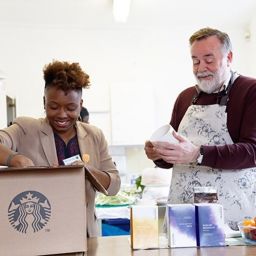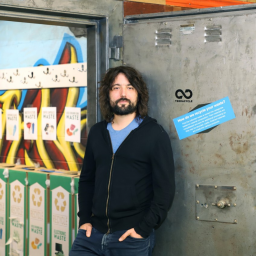The amount of material extracted from the earth, produced into raw material for new manufacturing, and designed to be tossed is garnering public attention around the world. Since the 1950s, about 8 billion tons of plastic have been produced and more than 300 million tons are now made each year; at best, 9% of all plastic ever made has been recycled. The rest has been landfilled, incinerated or littered.
COVID-19 put a spotlight on the situation. Waste volumes saw an estimated 30% increase the first year of the pandemic, public collection programmes struggled to keep up with standard garbage collection (let alone recycling), and the public woke up to the fact that most municipal and public recycling is not being recycled, which explains why so many citizens report caring about recycling and practicing it a majority of the time, while recycling rates remain low.
The state of recycling
Even before China and other South Asian countries banned imports of the world’s garbage, the world’s recycling infrastructure was fragmented, confusing and incapable of handling most of today’s most common product forms. Black plastic is imperceptible to scanners, every color plastic but white can’t be effectively repurposed into any other color, and additives to make plastic flexible, food-safe or protect contents against UV damage is viewed as a contaminant.
The complexities of today’s waste outputs don’t fit economically with the limited capabilities of recyclers today. Low oil prices, the bans on imported recyclables in countries like China, and the latest trends in packaging design (spouts, films, multi-layer wrappers, etc.) make it harder to recycle and more economical to dispose and produce new from virgin feedstocks.
In other words, the recyclability of any given material does not have to do with its composition or what it’s made from, but if it is profitable to do so. These are the economics of recycling. So much of what is capable of being recycled ends up in the garbage because companies can’t make money off them. There are organisations and plans to get the United Kingdom back on track for recycling, but the state of the infrastructure may be more dire than most realise.
How did we get here?
The global recycling system is only as mature as waste is a concept. By this I mean that before mass production and material technologies came on the scene 70 years ago, it was in the best interest of businesses and citizens to ensure they didn’t run out of things or waste money, as resources were viewed as scarce and precious, so repurposing and reusing was intuitive and part of the culture and natural design of the supply chain.
Then, factories exploded with synthetic textiles, disposable products, and single-use packaging touting convenience, lower costs, and the ability to consume more products and packaged goods than ever before. This redesign was not accompanied by innovations of recovery and reintegration of material at the same pace, and thus caused trash to pile up in the decades to follow.
Businesses and industry drove this paradigm shift. For every reason people (and the companies selling to them) have enjoyed and grown accustomed to disposability, there is an equal and opposite reason why expanding and enforcing recycling has been deprioritised. Before the recycling system improves, recyclable items and items made with recycled content may initially equal more costs of production, and a more expensive price tag for consumers.
Thus, while consumer preferences determine demand for recyclable items and products made with recycled content, these must be widely accessible (geographically, financially, and with ease of understanding) in order for it to achieve impact of scale. Business has the incredible opportunity to innovate, create new revenue streams, and steward redesign in order to drive change within their industries and give customers what they’ve been asking for.
Working around, and with, the current system
No one CPG company or manufacturer can work alone to achieve this. An ecosystem of retailers, NGOs, consumer groups, materials processors, local municipalities and governments working together to minimise risk and drive innovation is the ultimate vision to allow individuals and communities to recycle anywhere as they are today able to buy anything anywhere.
For example, our TerraCycle programme allow families, offices, businesses and facilities to work around the limitations of their local recycling programme. Most are funded and powered by manufacturers and retailers looking to voluntarily take responsibility for their products, and sometimes entire categories, regardless of brand. Some companies will work with us to create a takeback programme as part of the design of their product, unveiling both at the same time.
Items that we don’t have a brand-funded programme for can be recycled through our Zero Waste Box™ system, which can mix and match solutions exactly to the needs of the location. Municipalities and cities that use our solutions have a huge impact by managing, administering, and operating these solutions in public areas and municipal buildings as part of their infrastructure, as do facilities that work with us to recover pre-consumer material.

Tom Szaky, Founder & CEO, TerraCycle
Achieving scale
Applying our experience working along the supply chain to achieve a more circular economy, we consult and advise on ways companies can meet the current infrastructure where it is for wider recyclability and advancements in the system. We are part of and chair of committees on the Circular Economy for the World Economic Forum, Ellen MacArthur Foundation, and other similar NGOs and charities; we and many of our partner companies have pledged to aid in redesigns for recyclability.
As an example, we worked with one brand to redesign their toothpaste tube from a non-recyclable aluminum / plastic combination to mono-material HDPE which is locally recyclable in many communities in the United States. We have done this with a number of companies, even though it reduces our revenue in collecting and recycling the previously non-recyclable version of their products.
Ultimately, a greater paradigm shift is needed in order to make recycling a viable strategy for managing waste alongside reuse and source reduction. What can make recycling a more desirable, cost-effective and common sense option than disposal? The world needs more incentives for participation on all fronts.
Paying individuals to collect correctly through individual bottle bills and container deposits, offering credits to companies investing in local recycling systems and packaging redesigns and robust support and resources for buildings and cities looking to improve their recycling rates can each do their part to drive advancements for scaled collection and recycling.
Positively, where our programme help to facilitate voluntary producer responsibility activities, governments and mandates are stepping up to drive systems change across geographies. In the United States, the first state laws making companies pay for the recycling and disposal of their packaging have been passed, and the UK Packaging Regulations (implemented as part of the European Packaging Directive) require businesses to finance the recycling of a proportion of what they make, use or sell.
Technology exists and shows promise for automation and better separation of materials, which can widen what is collected through local programmes. But again, in the same way that TerraCycle programmes only work when someone is willing to pay for them, these innovations require someone to cover the cost. One robotics startup can discern an item’s shape, material type, brand, and what it contained; it has nearly $78 million in funding, and it’s only in the testing phase.
Effectively communicating and educating around noteworthy actions from the public and private sector can help inspire consumer participation in new and improved programmes, and critical adoption by businesses in driving change. Shared learnings could help industry groups see how recycling might help them solve some of their biggest problems, whether it’s concern for the planet or their bottom line.




















